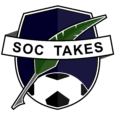Does playing pro soccer increase risk for neurodegenerative disease?

A new article in the New England Journal of Medicine by Daniel F. Mackay et al. raises the question of whether soccer follows the trend of “contact” sports in terms of increased risk of neurodegenerative disease for athletes. My article attempts to (1) summarize the key findings of the article with limited use of scientific jargon, and (2) place it in the larger context of where the beautiful game currently stands in its understanding of head injuries.
What did the study show?
The study showed that a subset (more on this later) of professional soccer players exhibited an increased risk of dying due to neurodegenerative disease than non-soccer players did. It also showed that professional soccer players — aside from the neurodegenerative disease part — seemed to be less likely to die from traditional killers such as heart disease and cancers such as lung cancer.
Which neurodegenerative diseases did they look at?
- Alzheimer’s disease – The most common form of dementia. Risk factors include age and a history of brain injuries.
- Parkinson’s disease – A primarily motor disease affecting a specific part of your brain.
- Motor neuron disease – This is a type of neurodegeneration that affects the nerves controlling your movement. A common example is Lou Gehrig’s disease (Amyotrophic lateral sclerosis).
- Non-Alzheimer’s dementias – Dementia is a catch-all term for change in cognitive function. Non-Alzheimer’s dementias are diseases that have some overlapping symptoms as Alzheimer’s, but involve different symptoms as well. These differences are due to brain regions affected, particularly during early stages of the disease. An example is frontotemporal dementia.
- Dementia NOS – All dementias (Thank you Dr. Stewart for this correction).
It is important to note that this study did not measure rates of chronic traumatic encephalopathy (CTE) directly. This was due to limitations in how the authors were able to procure the data (not their fault, by the way).
The sampling question
Something that is being missed in the analysis is that it was a study of male professional soccer players. This unavoidable bias is due to the fact that pro soccer players in Scotland are men. Therefore, the controls were required to be age and sex-matched, and hence all of this data comes from male soccer players and male controls. Whether this is applicable to women soccer players is an unanswered question. This is an important consideration as some data suggests that the rates of head injury in women’s soccer exceed those in the male version of the game.
Additionally, is this a Scotland-only effect? I ask this because there was a study that showed increased Lou Gehrig’s disease in a sample of Italian soccer players. To the best of my knowledge, this result had not been shown in soccer players from a different geographic region. This would suggest a synergistic effect of genetics (Italian for ALS or Scottish for soccer) and sport. To put it simply, this data may not be applicable to the soccer population at large. (It should be noted that this article shows an increased rate of motoneuron disease generally, but not ALS specifically.)
A particular strength of this study is that it mitigates a prevalent problem in the field of brain injury research — the self-selection bias of “bad brains.” The idea is that when someone is experiencing symptoms of neurodegeneration, they are more likely to donate their brain to science. Therefore, the percentages we get are skewed. In this study, the authors examined data to basically ascertain how it was that a person died. Therefore, they eliminate the “bad brains” bias, and their data can be interpreted as representative of — at the very least — the male soccer-playing population of Scotland.
Other takeaways
- No soccer position-specific effect on neurodegeneration, but existing one on prescription for dementia.
- Increased rate of dementia-related prescription in soccer players versus controls (reason unknown and the authors don’t speculate, but it could be due to increased awareness or socioeconomic status.)
Where is the sport with head injuries?
The sport is dragging its feet. FIFA needs to mandate harsher penalties on high-impact contact to the head, regardless of intention/getting the ball. Recently, the USL explored temporary substitutions for head injury diagnoses, which deserves applause. MLS, on the other hand, has failed to update its concussion protocol in spite of telling Four Four Two and the Associated Press that it would. It’s been over three years.
The overarching question about the risk of heading resulting in CTE remains unanswered in the literature. Previous work suggests that technically proficient headers of the ball are unlikely to be concussed due to ball to head impact. However, the hand-wavy question of subconcussive injuries (due to an impact on the brain that causes minor, externally unnoticeable changes in the brain) remains under-explored. Given that we have a case report of CTE in a soccer player who had no history of concussion, the subconcussive question is an interesting one. (The TL;DR version is that it’s just too early to say anything about heading the ball and CTE. I previously explored the question of heading in youth soccer.)
Overall thoughts
This is a well-powered and important study — the first of its kind for soccer — that shows that professional soccer players are likely to have an increased risk for neurodegeneration later in life. This is in agreement with data from other more traditional “contact” sports such as MMA and American football. Future work will need to expand this data set to include women soccer players, amateur soccer players and soccer players from different geographic/genetic backgrounds.
Follow Nipun on Twitter: @NipunChopra7.
Support Soc Takes on Patreon for access to exclusive content and supporter benefits. Click here to become a patron today.



